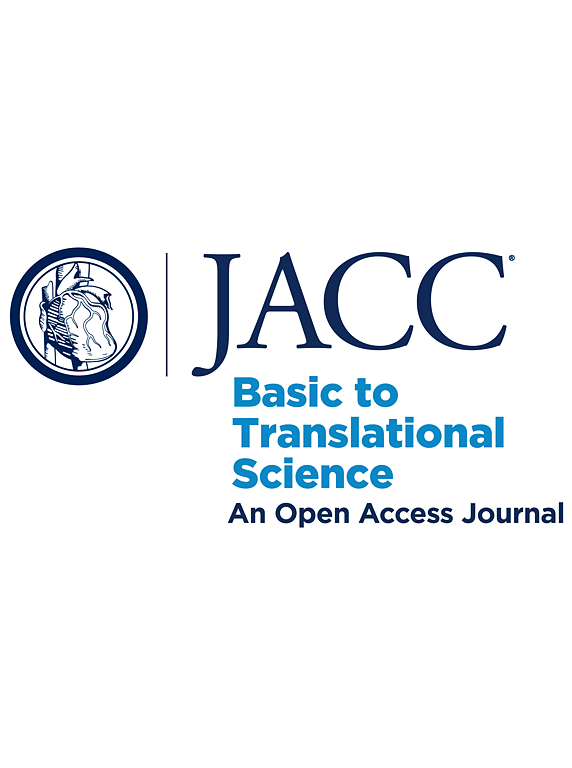Inhibition of Soluble Epoxide Hydrolase Reduces Inflammation and Myocardial Injury in Arrhythmogenic Cardiomyopathy
IF 8.4
1区 医学
Q1 CARDIAC & CARDIOVASCULAR SYSTEMS
引用次数: 0
Abstract
We analyzed the role of pro- and anti-inflammatory eicosanoids in the pathogenesis of arrhythmogenic cardiomyopathy (ACM). Lipidomics revealed reduced levels of anti-inflammatory oxylipins in plasma and increased levels of pro-inflammatory eicosanoids in hearts of Dsg2mut/mut mice, a preclinical model of ACM. Disease features were reversed in vitro in rat ventricular myocytes expressing mutant JUP by the anti-inflammatory epoxyeicosatrienoic acid 14-15-EET, whereas 14,15-EEZE, which antagonizes the 14,15-EET receptor, intensified nuclear accumulation of the desmosomal protein plakoglobin. Inhibition of soluble epoxide hydrolase (sEH), an enzyme that converts anti-inflammatory EETs into polar, less active diols, prevented progression of myocardial injury in Dsg2mut/mut mice and promoted recovery of contractile function. This was associated with reduced myocardial expression of genes involved in innate immune signaling and fewer injurious macrophages expressing CCR2. These results suggest that pro-inflammatory eicosanoids contribute to the pathogenesis of ACM. Inhibition of sEH may be an effective, mechanism-based therapy for ACM patients.
求助全文
约1分钟内获得全文
求助全文
来源期刊

JACC: Basic to Translational Science
CARDIAC & CARDIOVASCULAR SYSTEMS-
CiteScore
14.20
自引率
1.00%
发文量
161
审稿时长
16 weeks
期刊介绍:
JACC: Basic to Translational Science is an open access journal that is part of the renowned Journal of the American College of Cardiology (JACC). It focuses on advancing the field of Translational Cardiovascular Medicine and aims to accelerate the translation of new scientific discoveries into therapies that improve outcomes for patients with or at risk for Cardiovascular Disease. The journal covers thematic areas such as pre-clinical research, clinical trials, personalized medicine, novel drugs, devices, and biologics, proteomics, genomics, and metabolomics, as well as early phase clinical trial methodology.
 求助内容:
求助内容: 应助结果提醒方式:
应助结果提醒方式:


